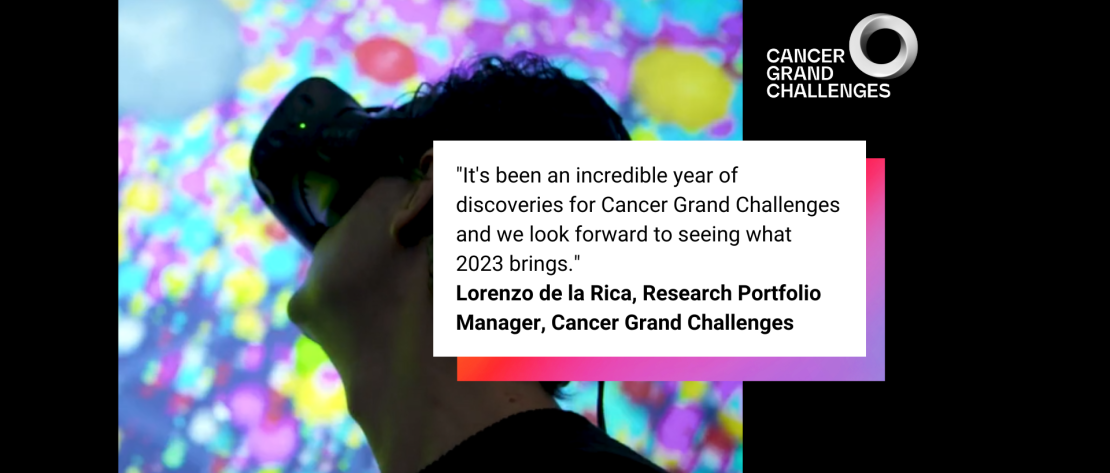Lorenzo de la Rica (@LdelaRica) is Research Portfolio Manager at Cancer Grand Challenges
In 2022, we have seen our Cancer Grand Challenges (CGC) community grow, with four new teams receiving a total of $100m funding. The teams from all three rounds are generating novel insights into cancer, whilst making steady progress in solving their challenges. I wanted to share some of the highlights emerging from our round 1 (2017) funded teams this year as they near the final year of their funding:
Team IMAXT: Can we build a complete picture of the anatomy of a tumour?
- Team IMAXT launched a powerful 3D tumour mapping tool that uses VR software is used to "step inside" a tumour. The software, created by Suil, will be made available for researchers to use worldwide for academic non-commercial research, to gain a greater understanding of the genetics and physical structure of a variety of cancers. In a recent paper, the team has uncovered novel insights into the genomic variation of a dangerous subset of triple-negative breast and high-grade ovarian cancers.
Team Rosetta: Can we build a complete picture of the anatomy of a tumour?
- Team Rosetta has curated a suite of mass spectrometry imaging (MSI) techniques which measure a broad range of metabolites and map their spatial distribution within the tumour microenvironment. They have been able to visualise the distribution and impact of Gemcitabine - a common treatment for pancreatic cancer- inside the tumour, which may help explain why the stroma prevents drug distribution to tumour cells, leading to treatment failure.
Team PRECISION: Distinguish between lethal cancers that need treating, and non-lethal cancers that don’t
- Team PRECISION made a seminal discovery that DCIS (Ductal Carcinoma In Situ) is not only a precursor but also a risk factor for the development of invasive breast cancer. Their data demonstrates that around 1 in 5 of these subsequent cancers are new, primary tumours unrelated to the initial lesion.These new insights could shift how ductal carcinoma is managed in the clinic, helping to reduce the burden of overtreatment. Earlier in the year, the team also saw that microcalcifications – the white specks often seen on mammograms – may provide clues as to how microcalcifications can influence the progression from harmless, non-invasive breast lesions to invasive disease.
Team Mutographs: Discover how unusual patterns of mutation are induced by different cancer-causing events
- Team Mutographs used the suite of powerful artificial intelligence tools they’ve developed to perform mutational signature analysis (SigProfiler), to identify unique clusters of DNA mutations that aggregate at specific regions of the genome and fuel tumour evolution. The study also revealed a novel role of the APOBEC3 family of antiviral enzymes in tumour evolution, via repeated hypermutation of extrachromosomal DNA. More recently, they discovered the missing link between smoking tobacco and bladder cancer by identifying new mutational signatures.
This is just a small selection of the amazing science coming out of four of our eleven funded teams. I think you'll agree, it's been an incredible year of discoveries for CGC and we look forward to seeing what 2023 brings. In March 2023, we’ll be announcing the next set of challenges identified through our global consultation process, with expressions of interest opening for teams to apply and take them on from 8 March.
